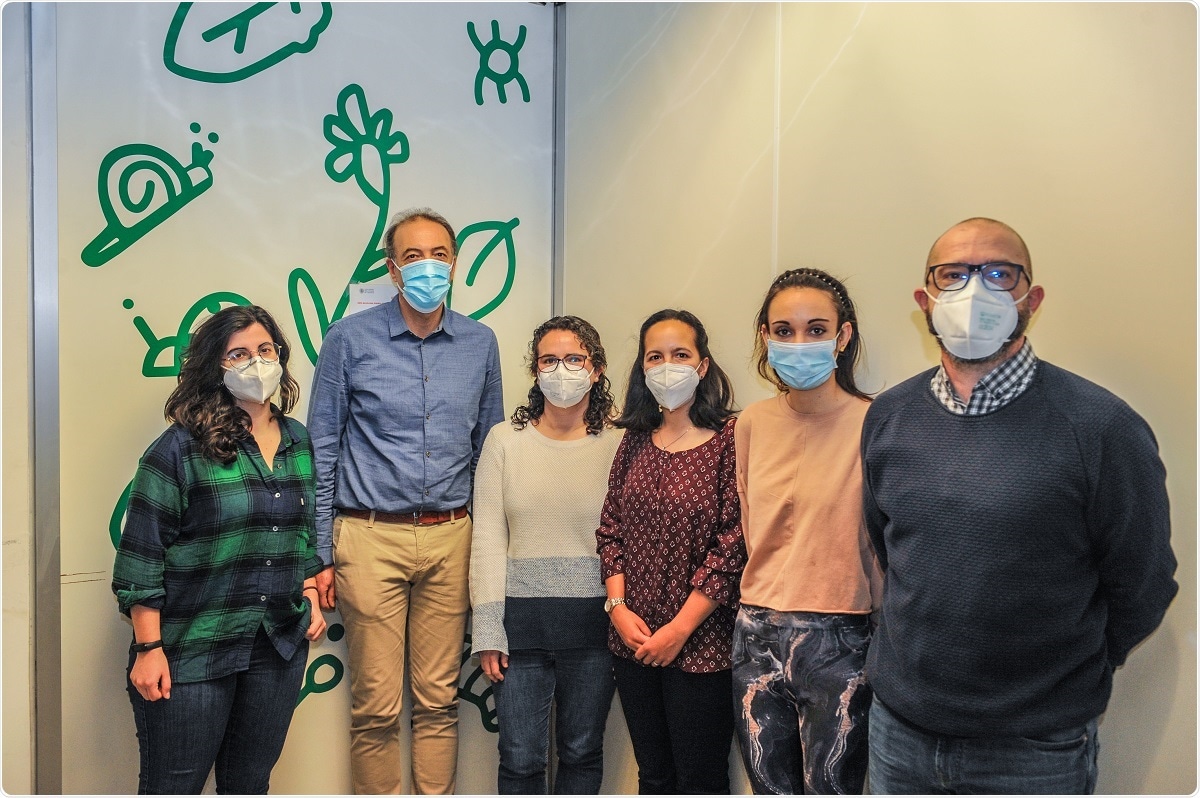A team of researchers from the Institute of Plant Molecular and Cellular biology (IBMCP)—a joint center of the Polytechnic University of Valencia (UPV)—and the Spanish National Research Council (CSIC) has confirmed that the SUPERMAN gene also establishes the number of flowers in leguminous plants.

Image Credit: Asociación RUVID.
The discovery, which was the outcome of years of research, has been reported in the new issue of The Plant Journal and paves the way to utilize them to enhance existing varieties and also to achieve new, more productive varieties.
Leguminous plants are a vast group of highly significant plants because of their nutritional value for cattle and humans. The families of leguminous plants are defined by certain unique features, like their complex floral development or their compound inflorescence.
To better understand these characteristics, it is important to study the key regulatory genes involved in the development of inflorescence and the flowers.”
Luis Cañas, Study Principal Investigator, Institute of Plant Molecular and Cellular biology - Spanish National Research Council Project
The SUPERMAN (SUP) gene is known to be an active repressor that regulates the number of carpels (female reproductive organs) and stamen (male reproductive organs) in Arabidopsis thaliana—the plant employed as a model for this type of research work.
The SUP gene regulates the gene expression that will create the stamen in the third whorl, serving as a barrier and inhibiting it from reaching the fourth whorl, where the carpel will eventually develop.
If the SUP gene suffers a mutation and becomes inactive, said genes will also be expressed in the fourth whorl, creating more stamen at the centre of the plant. Hence the name SUPERMAN, as the mutant plants have more male organs than regular ones.”
Edelín Roque, Researcher, Institute of Plant Molecular and Cellular biology
Roque was also involved in the study.
The project performed by the IBMCP team, which is associated with the doctoral dissertation of Ana Lucía Rodas, was aimed to achieve the functional characterization of the SUP gene in the leguminous plant model, called Medicago truncatula, or MtSUP.
To achieve this, the team utilized mutagenesis via the insertion of retrotransposon Tnt1, genetic expression analyses, genetic editing utilizing CRISPR/Cas9, and gene supplementation and overexpression trials.
Ana Lucía Rodas stated, “Our results show that MtSUP shares some roles described for SUP in Arabidopsis, with some variations.”
The main innovation is that, in the case of leguminous plants, MtSUP regulates the establishment of the secondary inflorescent meristem (I2) as well as the primordium of stamen and petals. When a mutation occurs in this gene, new flowers are produced rather residual vegetative organ, known as “spike,” similar to a bract and which forms at the flower side. Usually, wild inflorescence offers one or two flowers and ends with a spike.
In the case of mutant mtsup-1, there are additional flowers after meristem I2, which finishes its activity by producing a flower rather than the spike.
Rodas added, “Thus, MtSUP controls the number of flowers and petals-stamen that produce the common meristem and primordium, respectively.”
Pioneering research and applications
This work culminates the research conducted for decades in our laboratory to reveal the set of regulator genes that control the identity of the flower’s organs and of the areas of the flower where they express themselves. As often happens with pioneering research, here we have unveiled a new function of sequence homology of gene SUPERMAN in eudicots.”
José Pío Beltrán, Director, Group of Biology and Biotechnology, Flower Development, Institute of Plant Molecular and Cellular biology
“This new function affects a very important trait of the inflorescences of leguminous plants: the number of flowers they produce, where MtSUP is the first gene seen to control this trait of agronomic interest.”
For Luis Cañas, “good knowledge on the genes that control the floral development and fruition of leguminous plants is important for its genetic improvement and for generating new high-productivity varieties.”
Source:
Journal reference:
Rodas, A. L., et al. (2020) MtSUPERMAN plays a key role in compound inflorescence and flower development in Medicago truncatula. The Plant Journal. doi.org/10.1111/tpj.15075.